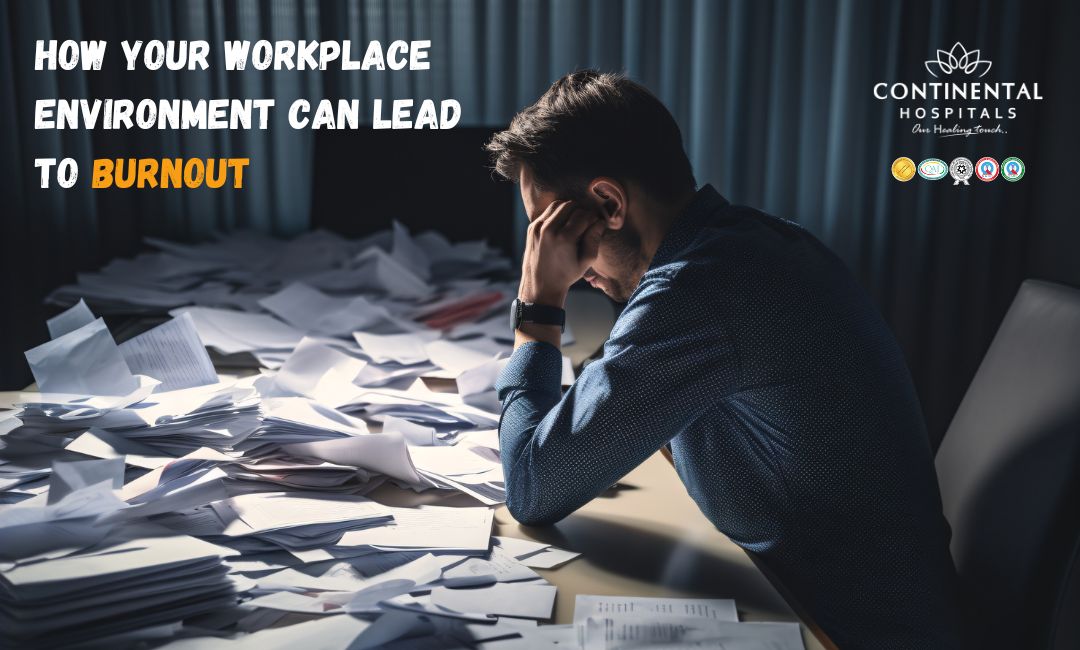Workplace burnout has become a common concern among employees across various industries. The term "burnout" describes a state of physical, emotional, and mental exhaustion caused by prolonged stress, often linked to work demands. It’s essential to understand how your workplace environment can contribute to this overwhelming feeling and what steps you can take to mitigate it.
What is Burnout?
Burnout is more than just a bad day at work or feeling tired. It’s a chronic state of stress that can lead to a variety of physical and mental health issues. Common symptoms of burnout include:
- Chronic fatigue: Feeling drained and exhausted all the time.
- Cynicism or detachment: Developing a negative outlook toward your job or coworkers.
- Reduced performance: Finding it hard to concentrate and complete tasks.
- Irritability: Increased frustration and mood swings.
- Sleep issues: Difficulty falling asleep or staying asleep.
If you recognize these signs in yourself or a colleague, it may be time to take a closer look at your workplace environment and its impact on your well-being.
How the Workplace Environment Contributes to Burnout
Several factors within the workplace can lead to burnout. Here’s a closer look at some of the key contributors:
🥗 Healthy Plate Challenge
🍽 Add Your Favorite Dish
Pick Your 6 favorite foods, eat, and see the results.Drag & drop foods onto your plate.
Drop Food Here
1. High Workload
One of the most significant causes of burnout is an excessive workload. When employees are consistently overloaded with tasks and deadlines, they may feel overwhelmed. This pressure can lead to a cycle of stress that’s hard to escape. If you find yourself working long hours or struggling to meet deadlines regularly, it’s essential to communicate with your supervisor about your workload and seek support when necessary.
2. Lack of Control
Feeling powerless in your job can significantly contribute to burnout. When employees do not have a say in their work processes or decision-making, it can lead to frustration and helplessness. If you feel like you’re constantly being told what to do without any input on how to get the job done, it can erode your sense of ownership and satisfaction in your work.
3. Unclear Expectations
Confusion about job responsibilities and expectations can create an environment of stress and anxiety. If you are unsure of what is expected of you, it can be challenging to prioritize tasks or feel accomplished in your work. Clear communication from managers about roles and responsibilities is crucial to preventing burnout.
4. Poor Work-Life Balance
In an increasingly connected world, the lines between work and personal life can blur. When work demands seep into personal time, it can lead to a lack of balance that fosters burnout. Employees who cannot disconnect from work may feel that they are always "on call," making it difficult to recharge and find joy outside of work.
5. Lack of Support
A supportive work environment is vital for employee well-being. When employees feel isolated or unsupported by their peers or management, it can lead to increased stress and burnout. A positive workplace culture fosters collaboration and encourages open communication, which can help mitigate feelings of isolation.
6. Negative Work Environment
Toxic workplace cultures that include conflict, bullying, or excessive criticism can quickly lead to burnout. A lack of positivity and encouragement can leave employees feeling demoralized and undervalued. It’s essential to cultivate a workplace environment where respect and support are prioritized.
7. Monotony and Lack of Growth Opportunities
Repetitive tasks and a lack of professional development opportunities can lead to boredom and dissatisfaction. When employees feel stagnant in their roles, it can contribute to feelings of burnout. Encouraging growth and development, whether through training or new responsibilities, can keep employees engaged and motivated.
8. Inadequate Resources
A lack of necessary resources, such as tools, technology, or support staff, can make it difficult for employees to perform their jobs effectively. This struggle can lead to frustration and feelings of incompetence, contributing to burnout.
Strategies to Combat Burnout
If you find yourself experiencing burnout or feeling overwhelmed, there are several strategies you can implement to help mitigate the effects:
1. Communicate Openly
Talk to your supervisor or HR about your workload and feelings of stress. Open communication can lead to solutions and adjustments that improve your situation.
2. Set Boundaries
Establish clear boundaries between work and personal life. This may include setting specific work hours, turning off work notifications after hours, or creating a designated workspace at home.
3. Take Breaks
Make sure to take regular breaks throughout the day to recharge. Short breaks can boost productivity and reduce feelings of exhaustion.
4. Practice Self-Care
Engage in activities that promote your well-being, such as exercise, meditation, or hobbies. Taking time for yourself is crucial in managing stress and avoiding burnout.
5. Seek Support
Don’t hesitate to seek support from colleagues, friends, or professional counselling if you’re feeling overwhelmed. Talking about your feelings can help lighten the emotional load.
6. Explore Growth Opportunities
Look for opportunities to learn new skills or take on new responsibilities. Engaging in personal and professional development can reignite your passion for your work.
7. Foster Positive Relationships
Build strong connections with your coworkers. A supportive network can help create a positive work environment that reduces feelings of isolation and stress.
8. Promote a Healthy Workplace Culture
Encourage management to implement policies that promote a healthy work culture, including flexibility, support systems, and recognition for achievements.
Conclusion: Don’t Suffer in Silence
Burnout is a serious issue that affects many individuals in today’s demanding work environments. Recognizing the factors that contribute to burnout and implementing strategies to combat it can make a significant difference in your well-being.
If you find yourself struggling with burnout despite your efforts to manage it, consider seeking professional help. Consult our best psychologist.
Read our blog:
.webp)














